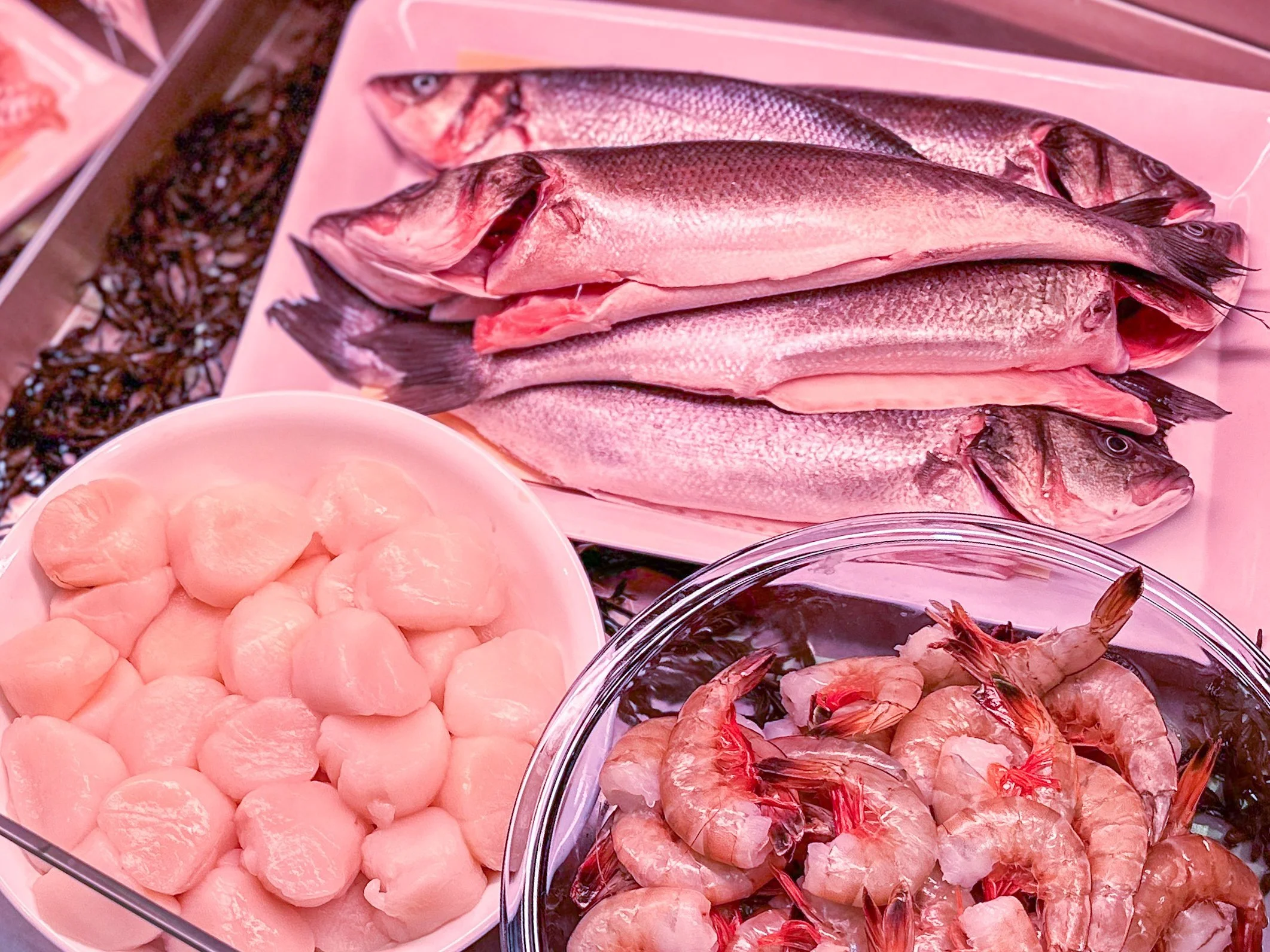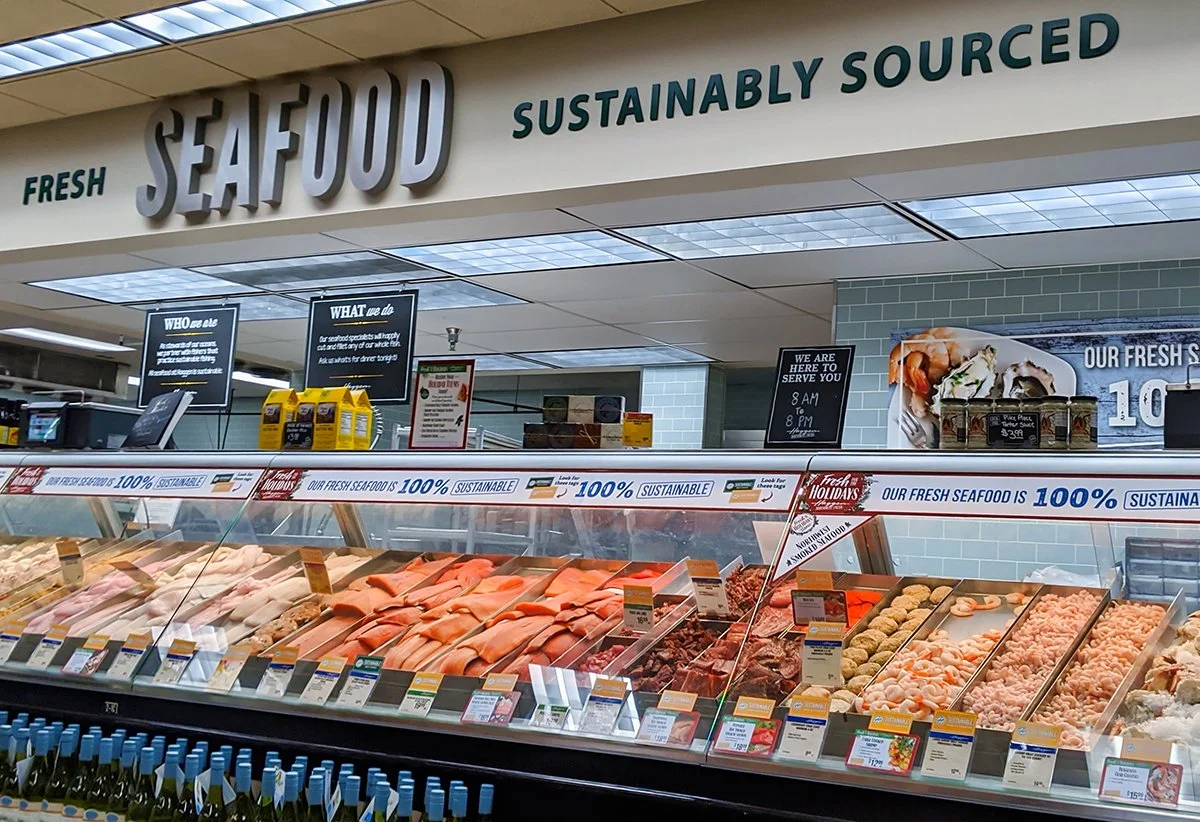Should You Buy Seafood at the Grocery Store or the Fish Market?
Has anyone ever told you not to buy seafood from a grocery store?
Maybe they said it’s lower quality, or that it’s not sustainable?
Well… they lied.
Say it with me now: there is NOTHING wrong with grocery store seafood.
Most people (myself included) buy their seafood at the grocery store. But I also shop at fish markets — and depending on what I’m making, there are clear reasons why I’ll go to one over the other.
Grocery stores and fish markets each have their strengths — and depending on what you're cooking (or craving), one might serve you better than the other.
Here’s a breakdown of why you might head to each — and what to look for when you do.
When to Buy Seafood at a Fish Market
I’m heading to the fish market when I want something ultra premium, seasonal, or specific — basically anything that falls outside the norms of a typical North American seafood diet.
1. For ultra-premium or luxury products
Fish markets often have direct access to top-tier seafood — the stuff that rarely hits grocery store shelves.
Think: diver scallops, uni, spot prawns
2. When you want “weird” or underutilized species
Fish markets are the best place to discover what’s beyond salmon and shrimp.
Think: monkfish, smelts, periwinkles, triggerfish, whelks, dogfish
3. For specialty cuts & offcuts
Grocery stores stick to fillets — but at the market, you can request the good stuff chefs love.
Think: salmon collars, halibut cheeks, fish heads, bones, bellies
4. If you want personalized service
Want your fish scaled, gutted, filleted, or cleaned a specific way? A fishmonger’s got your back.
Think: whole branzino, live lobster, cleaned squid
5. When you want to support local*
Fish markets often have more flexibility to showcase what’s fresh and in season — including regional or smaller-volume catches.
Think: what’s local to your area! This varies widely depending on where you live. A quick Google search — “what seafood is local to [your city]” — is a great place to start.
Note: Some grocery stores do carry local seafood, too. For example, I’ve seen fresh pickerel at big box stores during pickerel season here in Ontario.
But fish markets often have more agility to jump on short or niche fishing seasons. Even though I live on the opposite side of the continent from Alaska, my local fish market brings in Copper River salmon during its peak season. Larger grocery retailers don’t always have that kind of flexibility — especially for limited, high-quality inventory.
When to Buy Seafood at the Grocery Store
If I’m not chasing something super niche or seasonal, I’m probably picking up seafood with the rest of my weekly groceries.
1. For convenience
One stop shop? Easy dinner? Grocery stores are unbeatable for speed and ease.
Think: salmon portions, frozen shrimp, oven-ready fish sticks, frozen crab cakes
2. If you're on a budget
Supermarkets stock value-driven options — especially farmed or frozen seafood.
Look for: tilapia, pangasius, surimi
3. If you want consistency
You want the same salmon every week, year round? Grocery stores offer a reliable and predictable experience.
Look for: vacuum-packed salmon, packaged sushi, pre-portioned fillets
5. For labeled certifications
The myth that grocery store seafood isn’t sustainable? It’s just that — a myth.
Getting seafood into a grocery store is hard.
Retailers have strict sourcing policies, and producers have to pass multiple rounds of audits, certifications, and traceability requirements to even make it onto the shelf.
So if you’re seeing seafood at big-name retailers like Costco, Whole Foods, or Loblaws? It’s not random. It’s been vetted, verified, and reviewed — likely multiple times over.
But let’s be clear: this does not mean that fish market seafood isn’t sustainable.
Many fish markets source from highly sustainable, certified fisheries — but they might not display the official logos on signage or packaging. Why?
Because logo usage comes with a licensing fee, and smaller distributors, retailers, or independent markets often don’t pay for the rights to display those logos — even when the product is certified. (You can learn more about that in my sustainable seafood guide.)
So your seafood might actually be MSC, ASC, or BAP certified — but unless you ask, you wouldn’t know it.
That’s why it’s worth building a relationship with your local fishmonger. Ask them where the product is from, what fishery it came out of, or if it's certified (even if it’s not labeled that way).
The transparency is often there — it just might not come with a sticker.
Bottom Line?
There’s no “right” place — just the right place for what you need.
Fish market for adventure. Grocery store for convenience.
Either way, you're one step closer to a delicious seafood dish.


